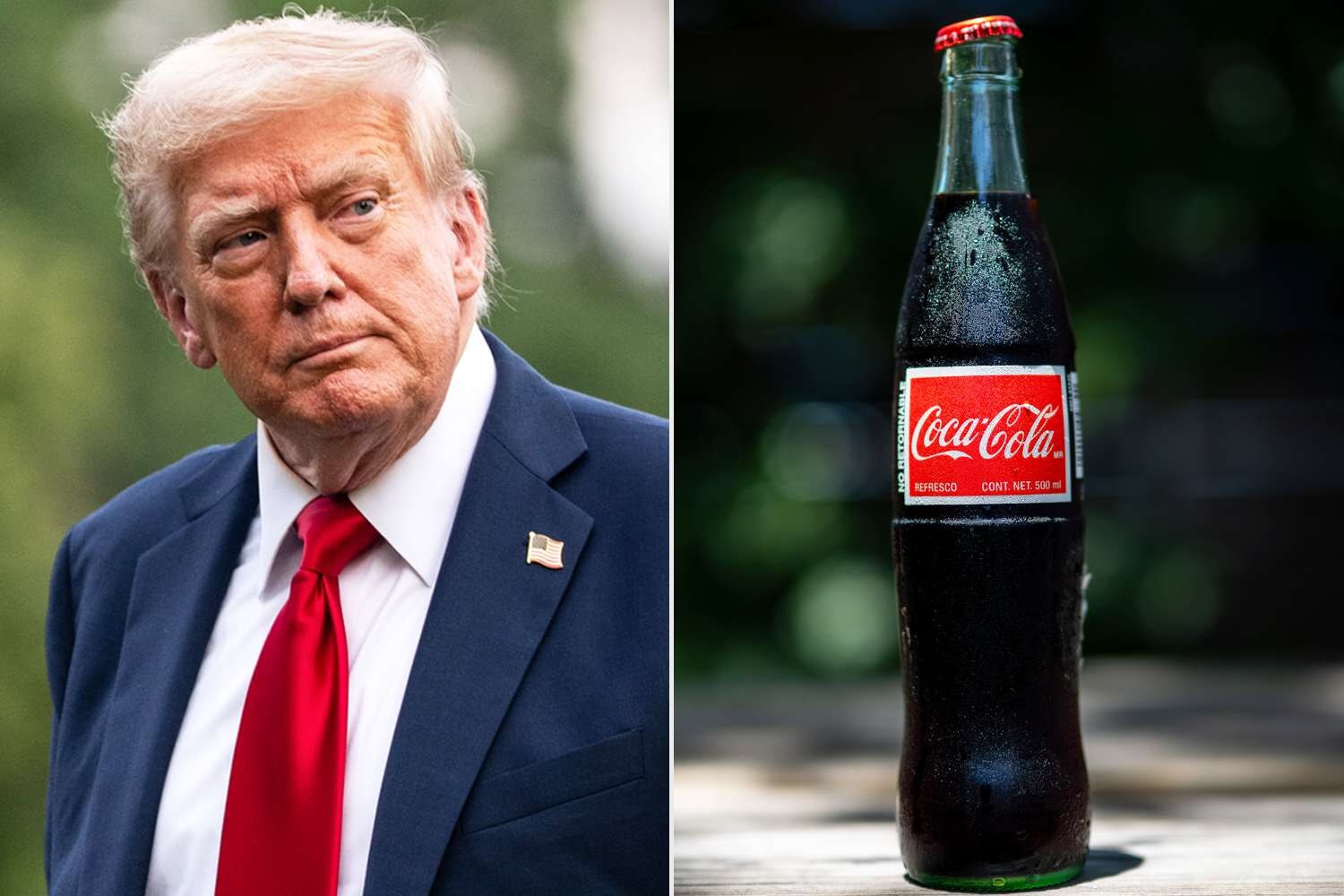
Largest Piece of Mars Ever Found on Earth Sells for $5M at NY Auction
That's an expensive rock.
Published July 29, 2025
Advertisement
Advertisement
1. A Cosmic Giant Hidden in the Sands
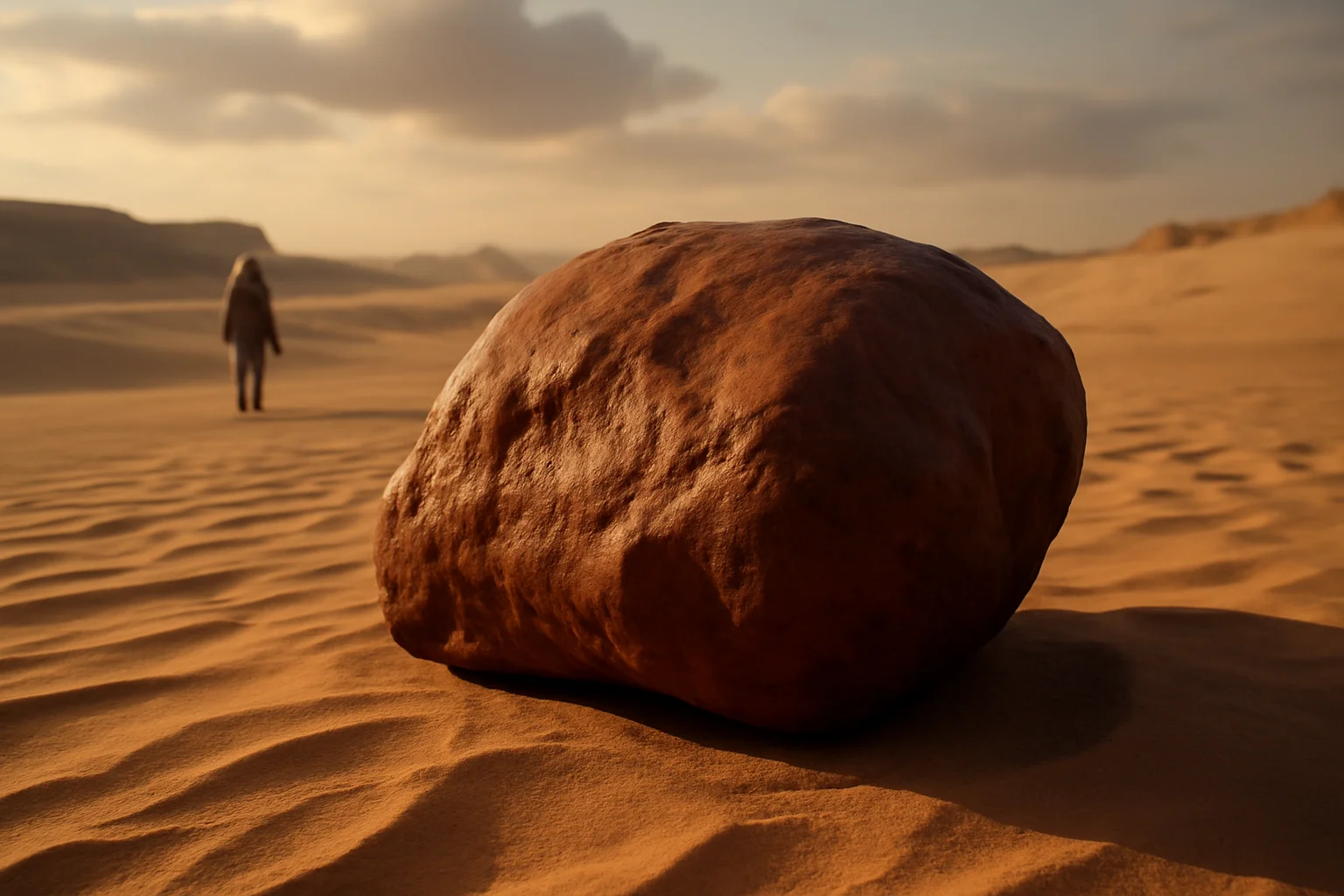
In the barren stretches of Niger’s remote Agadez region, a discovery was made in November 2023 that would ripple across the worlds of science, auction houses, and dreamers alike.A meteorite hunter, driven by years of experience and luck, stumbled upon an extraordinary object—an ashy, terracotta-colored rock with a weight and aura unlike any other found in the desert.Weighing just over 54 pounds and measuring nearly 15 inches in length, this specimen dwarfed all previous Martian meteorites discovered on Earth, coming in at 70% larger than its next biggest sibling.Christened NWA 16788, the stone’s presence was enough to draw experts and collectors from around the world, as its size alone represented a staggering 6.5% of all Martian material known to exist on our planet.Cassandra Hatton, Sotheby’s vice chairman of science and natural history, recognized instantly that this was not only a once-in-a-generation find but an artifact capable of capturing the public’s imagination in ways rarely seen outside of science fiction.Most meteorites burn away as they tear through our atmosphere, vanishing in fire and light, but this one survived the 140-million-mile gauntlet from the red planet to Earth, an odyssey marked by violence and chance.Its journey began with a powerful asteroid impact on Mars, hurling the rock into the void, and ended in the warm sands of the Sahara—a landing site just as improbable as the voyage itself.Hatton later remarked, “The odds of this getting from there to here are astronomically small,” a sentiment underscored by the fact that 70% of Earth is covered by water, and had it landed in an ocean, its secrets would have been lost forever.This was not merely a rock but a messenger, forged in the violence of Mars and the extremes of space, now resting in a new world, ready to ignite curiosity and controversy.As scientists and collectors alike converged, the mystery and significance of NWA 16788 only deepened, setting the stage for a remarkable tale of science, commerce, and the enduring lure of the unknown.The stage was now set for the world to reckon with the largest Martian meteorite ever found—an object whose true story had only just begun.
Advertisement
2. An Object of Desire: The Race to Acquire NWA 16788
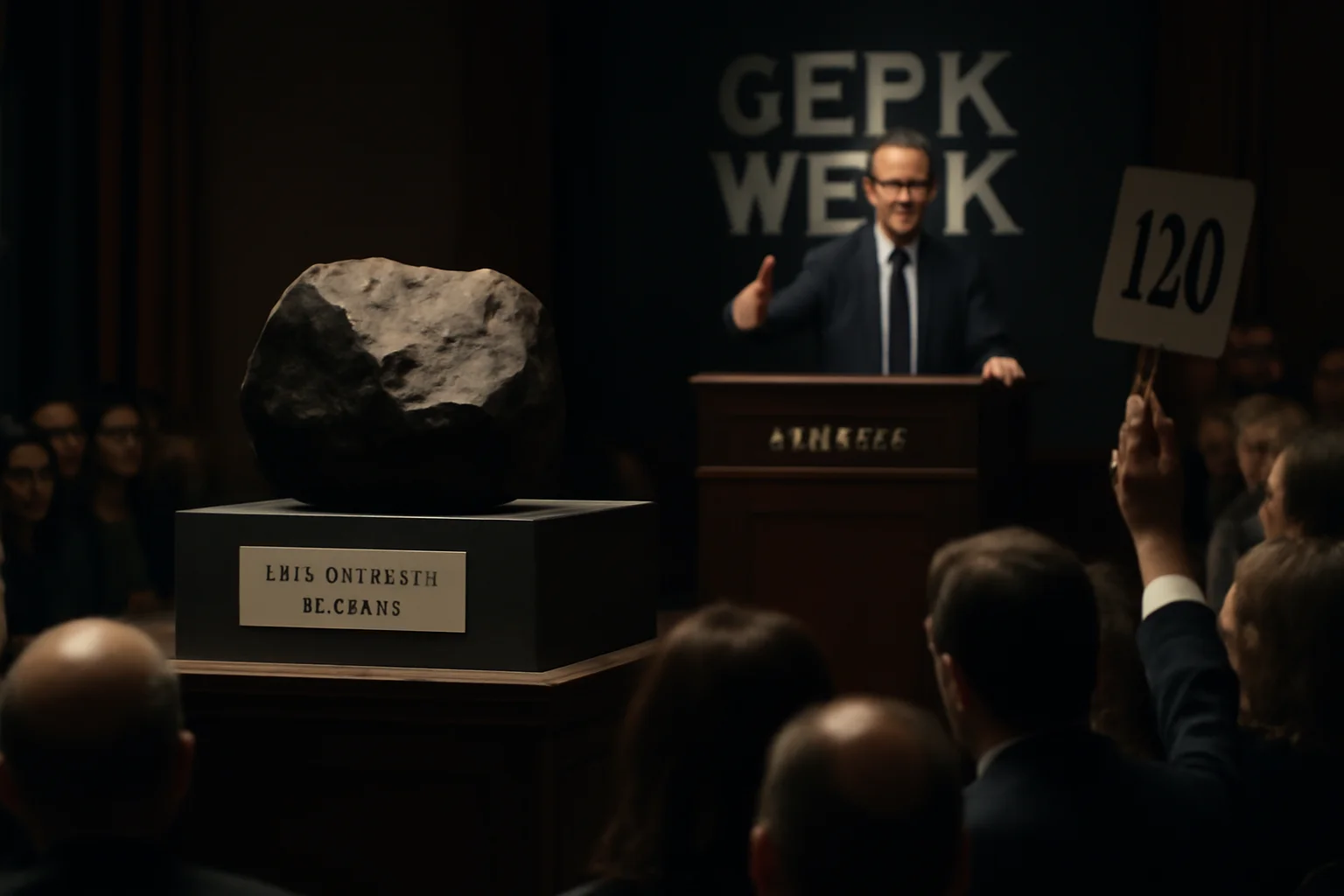
Word of the discovery spread quickly, and soon the Martian meteorite was the centerpiece of feverish speculation and scientific intrigue.With its public unveiling at the Italian Space Agency in Rome during the 2024 European Researchers’ Night, and later in a private gallery in Tuscany, the stone drew crowds who marveled at its size and the strangeness of its origin.Unlike most meteorites, which are mere fragments or slivers, this was a solid mass, a true relic of another world that could be lifted, studied, and even possessed.The Meteorite Bulletin, the global authority on meteor-related science, officially validated NWA 16788’s Martian origins, marking it as a scientifically priceless sample.Despite the growing call for its preservation in a museum or research institution, the rock’s path was set for the high-stakes world of private collectors, whose fortunes often determine the fate of such rare finds.Sotheby’s, a centuries-old auction house renowned for handling objects of immense rarity and value, announced the stone as the crown jewel of its upcoming Geek Week sale.Estimates for the auction soared from $2 million to $4 million, with experts predicting that the unique characteristics of NWA 16788 would make it the most valuable meteorite ever offered to the public.As anticipation mounted, the meteorite became more than a scientific object; it transformed into a symbol of human curiosity, ambition, and the complicated interplay between science and commerce.Hatton reflected on this dynamic, noting that “without collectors, many of the world’s great museums would not exist,” and pointing out the symbiotic relationship between private ownership and public science.Still, a tension grew among scientists, some of whom worried that such a profound artifact might vanish into a private vault, its secrets locked away from the world.The auction’s approach was covered by news outlets around the globe, each retelling the rock’s journey from Martian bedrock to New York’s auction spotlight, fanning the flames of a growing debate about the ownership of extraterrestrial wonders.Through it all, the public’s fascination with Mars, the promise of new discoveries, and the allure of possession drove the price—and the pressure—ever higher.By the time the auction doors opened, NWA 16788 was not just a meteorite; it was an event, a crossroads for science, dreams, and wealth, waiting for its next chapter to be written.
Advertisement
3. The Bidding War: A Meteorite in the Spotlight
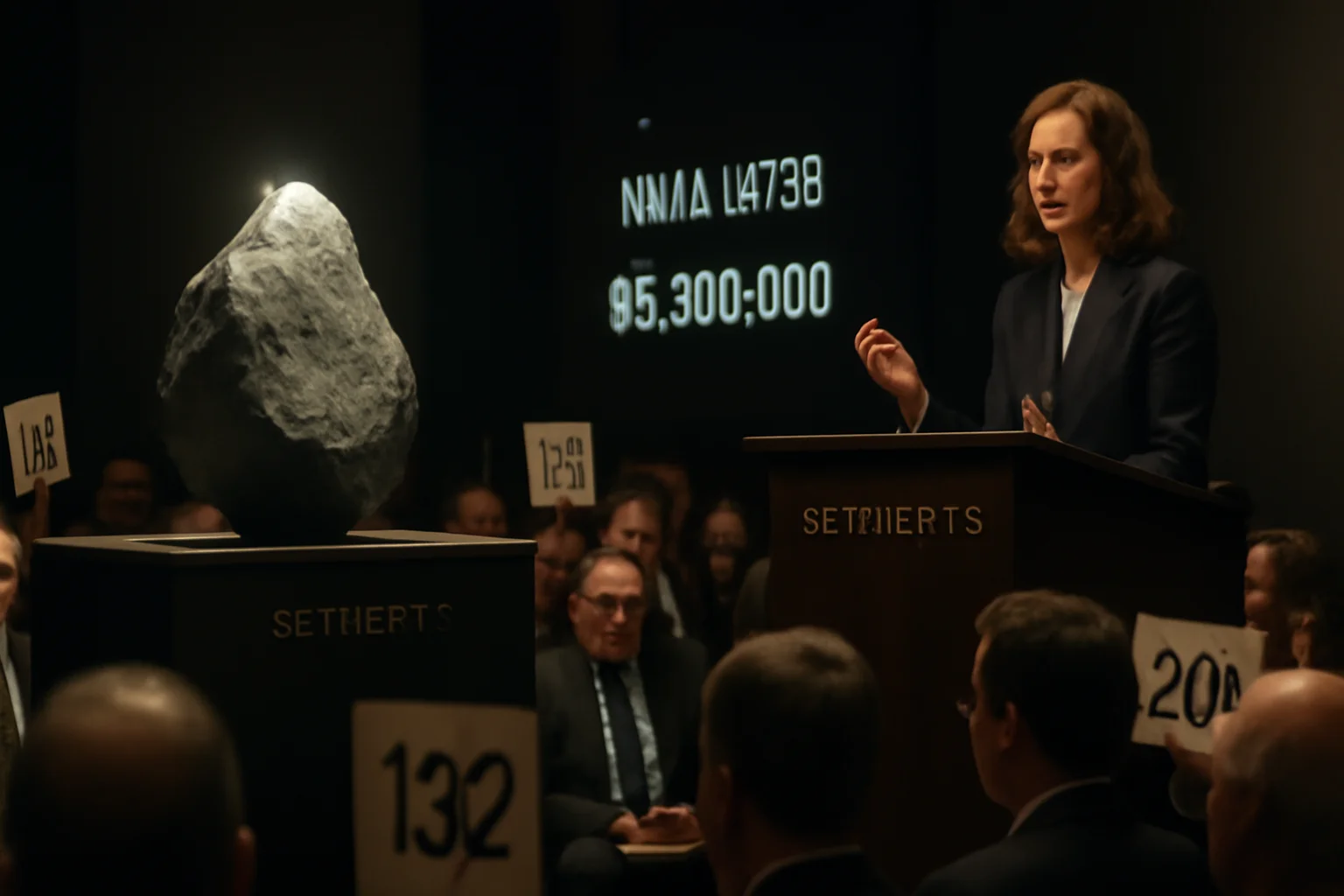
When Sotheby’s finally unveiled NWA 16788 to prospective buyers in New York, excitement mingled with suspense, filling the gallery with an energy reminiscent of the greatest art auctions in history.Bidding opened at $2 million, fueled by advance offers and the electric possibility that the stone could set new records for value and prestige in the world of natural history collectibles.As bids climbed to $4.3 million, then surged higher with fees and taxes to reach the astronomical final tally of $5.3 million, it became clear that this was a prize unlike any other.In contrast to the dramatic, fast-paced auction of a rare dinosaur skeleton that same day, the meteorite’s sale was marked by careful, incremental bidding, as if each participant felt the weight of cosmic history on their shoulders.Observers and scientists watched with a blend of awe and trepidation, knowing that whoever claimed NWA 16788 would possess a singular piece of the solar system’s narrative—a rock that had traversed worlds and epochs.The auctioneer, acutely aware of the object’s significance, coaxed the final bids in a slow crescendo, acknowledging both the stone’s monetary worth and its deeper, almost mythic, value to humanity.Cassandra Hatton’s role as both steward and advocate for the meteorite came into sharp focus, as she balanced the desires of collectors with the hopes of the scientific community.When the gavel fell and the sale was complete, applause echoed in the hall, signaling not only a record-breaking transaction but also the end of a chapter in the stone’s remarkable odyssey.The buyer, choosing anonymity, left the world to wonder about the meteorite’s future—whether it would be studied, displayed, or hidden away, a silent witness to human longing and curiosity.For a moment, the boundaries between science, commerce, and storytelling blurred, united by the drama and grandeur of the world’s largest Martian meteorite sale.Yet beneath the spectacle, a vital question lingered: what new secrets might this Martian relic yield, and would the world ever be allowed to know them?
Advertisement
4. The Science Within: Unlocking Mars Through Stone
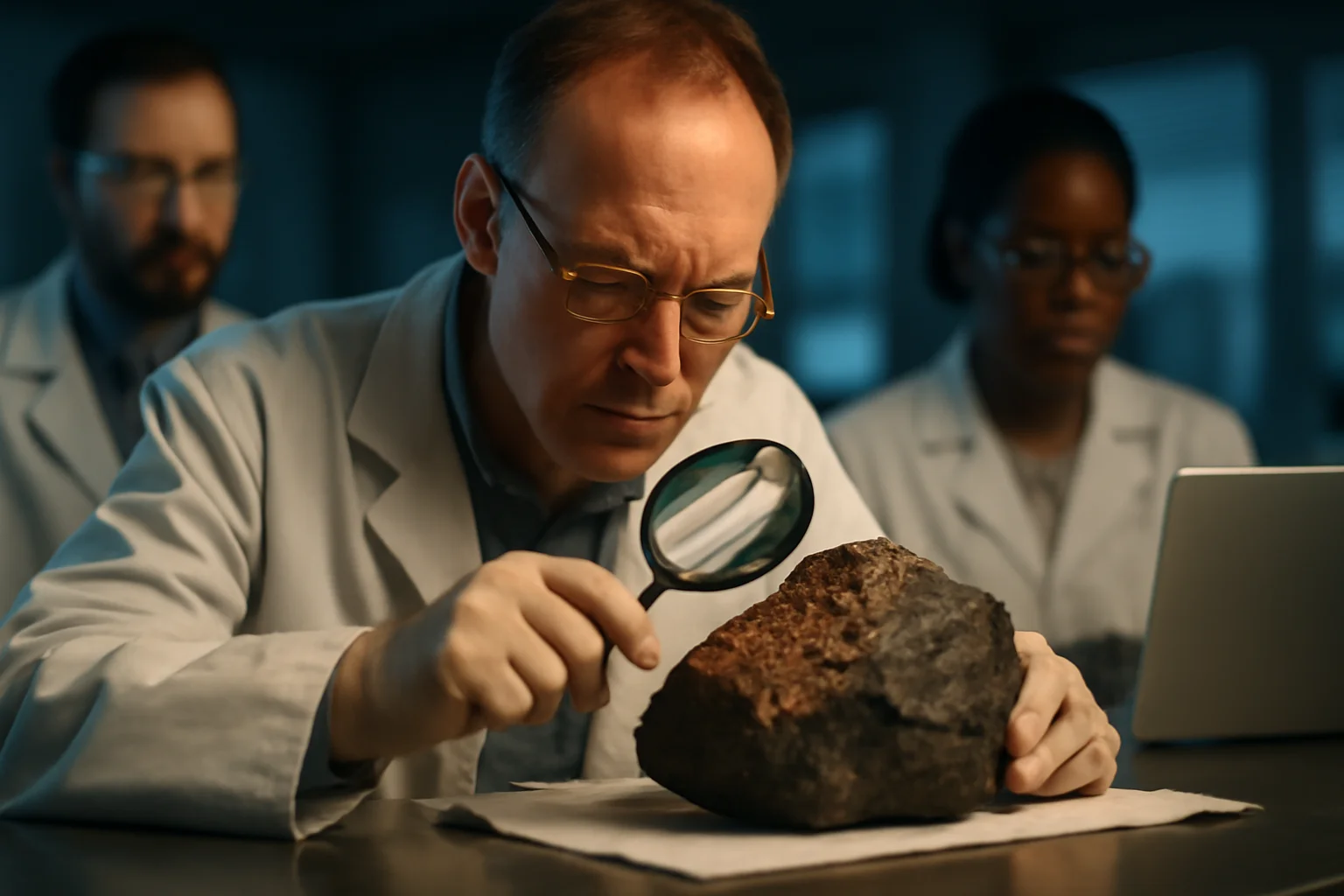
As the dust of the auction settled, attention turned once again to the scientific treasures locked inside NWA 16788.Researchers and planetary scientists pored over data from the stone, eager to understand what stories it might tell about Mars’ past and the tumultuous forces that shaped both the meteorite and the planet itself.Initial tests revealed a composition of olivine-microgabbroic shergottite, a rare type of Martian rock forged in the slow cooling of ancient magma beneath the red planet’s surface.The presence of Maskelynite glass—formed in the violence of an asteroid strike—was a clear signature that the meteorite had survived unimaginable pressures and temperatures before embarking on its interplanetary journey.Careful chemical analysis showed that NWA 16788 had retained much of its original Martian character, its minerals virtually untouched by the weathering of Earth.Experts compared pockets of gas trapped within the stone to data gathered by NASA’s Viking landers in the 1970s, finding unmistakable evidence of Martian atmosphere and further cementing its identity.The rock’s size alone opened the door to extensive research opportunities, allowing for detailed sampling and the possibility of discoveries that could alter our understanding of Mars’ geology and history.Scientists marveled at the meteorite’s fusion crust, the glassy, scorched layer created as it tore through Earth’s atmosphere—a feature rarely preserved in smaller, less complete specimens.As the meteorite entered private hands, hope remained that researchers would be granted access to study its secrets, perhaps revealing new clues about Mars’ evolution, volcanic activity, or even the possibility of past life.The scientific community’s plea was clear: whatever the outcome, the true value of NWA 16788 lay not in its price, but in the knowledge and inspiration it could offer to humanity.In the end, the stone’s journey from Martian volcano to Saharan desert, and now to an unknown owner, stood as a testament to the enduring partnership—and tension—between curiosity, commerce, and the quest for understanding.
Advertisement
5. The Moment of Revelation: More Than a Rock
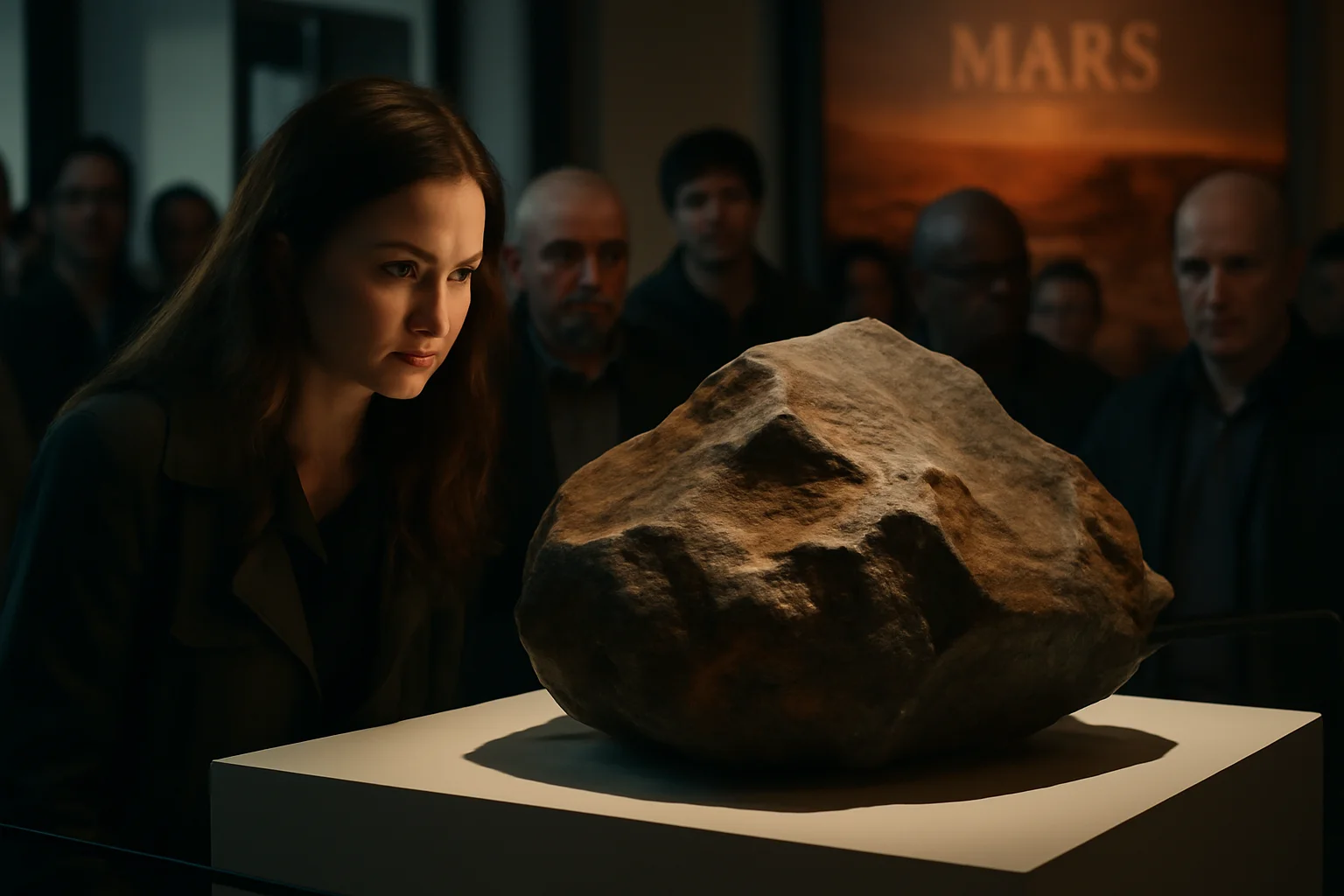
As NWA 16788’s story unfolded before the eyes of the world, its true significance emerged—not merely as a specimen, but as a symbol of connection between worlds.Here was a rock that had survived the unimaginable: the explosive violence of an asteroid impact, the cold vacuum of space, the searing heat of Earth’s atmosphere, and finally, the scrutiny of both scientists and collectors.For many, it became an object of wonder, a tangible link to the mysteries of Mars and the processes that shape planets across the cosmos.Cassandra Hatton reflected on the moment of revelation, emphasizing that “this isn’t just a miraculous find, but a massive dataset that can help us unlock the secrets of our neighbor, the red planet.”The meteorite’s public exhibition before the auction drew throngs of visitors, each person pausing before the Martian relic, drawn by its stark beauty and the story it represented.Hatton noted that “if you look closely at it, you could almost use it as a film set for a movie about Mars—put little teeny people on there, because you could see the grooves and the ripples and the mountains on it.”The rock’s aesthetic value, its uncanny resemblance to Martian landscapes seen in rover photos, only added to its allure, making it more than just a scientific object, but a work of cosmic art.Amid the awe, debates continued about the rightful place for such a specimen—whether in a private collection or a museum, available for all to see, study, and dream upon.Supporters of private ownership argued that collectors often fund research and exhibitions, while others insisted that relics of this importance belong to the world.Whatever its fate, the rock had ignited imaginations everywhere, reminding people of humanity’s longing to reach beyond our own world, to touch the stars and the stories they hold.NWA 16788 was no longer just a meteorite; it had become a beacon, shining light on the interplay of chance, ambition, and the endless pursuit of discovery.
Advertisement
6. The Auction That Stole the Show

Yet the drama surrounding the Martian meteorite was matched—if not surpassed—by another spectacle in the very same auction.On that memorable day in New York, a rare juvenile Ceratosaurus skeleton ignited a six-minute bidding war that captivated the room and sent the price soaring to more than $30 million.The dinosaur, one of only four known specimens of its species and the only juvenile ever found, stood as a prehistoric reminder of life on Earth, more than 150 million years old.Bidding for the skeleton began at $6 million, with rapid increases of $500,000 and later $1 million, as participants fought for the privilege to own a piece of natural history on a grand scale.When the gavel finally fell, applause erupted, marking the sale as the third-highest amount ever paid for a dinosaur fossil, a testament to the enduring fascination with the giants of our planet’s past.Sotheby’s revealed that the buyer planned to loan the skeleton to an institution, ensuring that the ancient bones would be accessible to researchers and the public alike.The juxtaposition of ancient life and cosmic debris created a surreal atmosphere, as bidders and spectators were reminded of the vastness of time, the reach of human curiosity, and the power of discovery.Each item, whether Martian or terrestrial, told a story that spanned eons, continents, and even worlds—united for a brief moment in the glare of the auction spotlight.As headlines declared the record-breaking sales, questions about the stewardship and future of these relics lingered in the minds of all who watched.The auction, in its grandeur and intensity, underscored how the past, present, and future are intertwined in the objects we choose to preserve, study, and revere.
Advertisement
7. Rarity Beyond Imagination
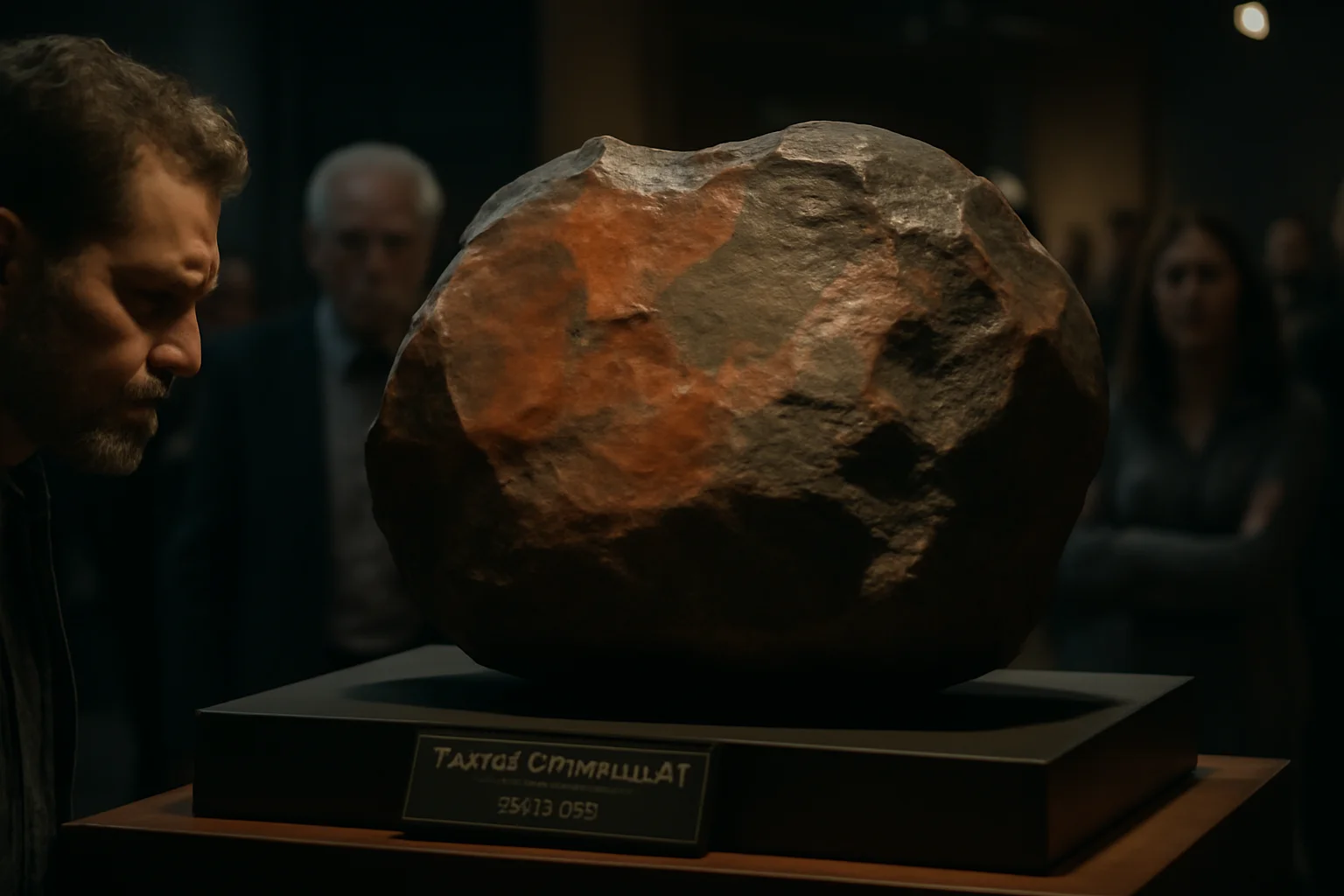
The allure of NWA 16788 lay not only in its size, but in its near-mythic rarity, a status highlighted by the fact that out of more than 77,000 officially recognized meteorites on Earth, only about 400 are known to be Martian.To encounter such a specimen in the wild was akin to finding a message in a bottle cast into the cosmic sea—a chance so remote that it bordered on the miraculous.Meteorites from Mars are differentiated by their unique chemical signatures, painstakingly compared to data collected by spacecraft and rovers, and confirmed through rigorous laboratory analysis.NWA 16788’s internal composition, its distinct minerals, and the telltale presence of trapped Martian atmosphere provided the final, irrefutable proof of its origin.Its red, brown, and gray hues, its glassy fusion crust, and its monumental dimensions transformed it from a mere rock to a legend among planetary scientists and collectors.The meteorite’s survival and discovery on land, rather than being lost in Earth’s oceans, elevated its status further, prompting experts to remark on the astronomical odds of its journey.As museums, scientists, and collectors vied for access, the stone became a focal point for debates about rarity, value, and the meaning of possession in the modern world.Collectors, who often serve as custodians for rare objects, were praised by some for their role in supporting science and preserving heritage, while others remained uneasy about treasures slipping from public view.Ultimately, NWA 16788 became a symbol not just of rarity, but of the ways in which luck, expertise, and ambition converge to reveal the hidden wonders of the universe.In every sense, it was a find that defied probability, a tangible reminder of how much remains to be discovered in the cosmos and on our own world.
Advertisement
8. Science, Commerce, and the Quest for Knowledge
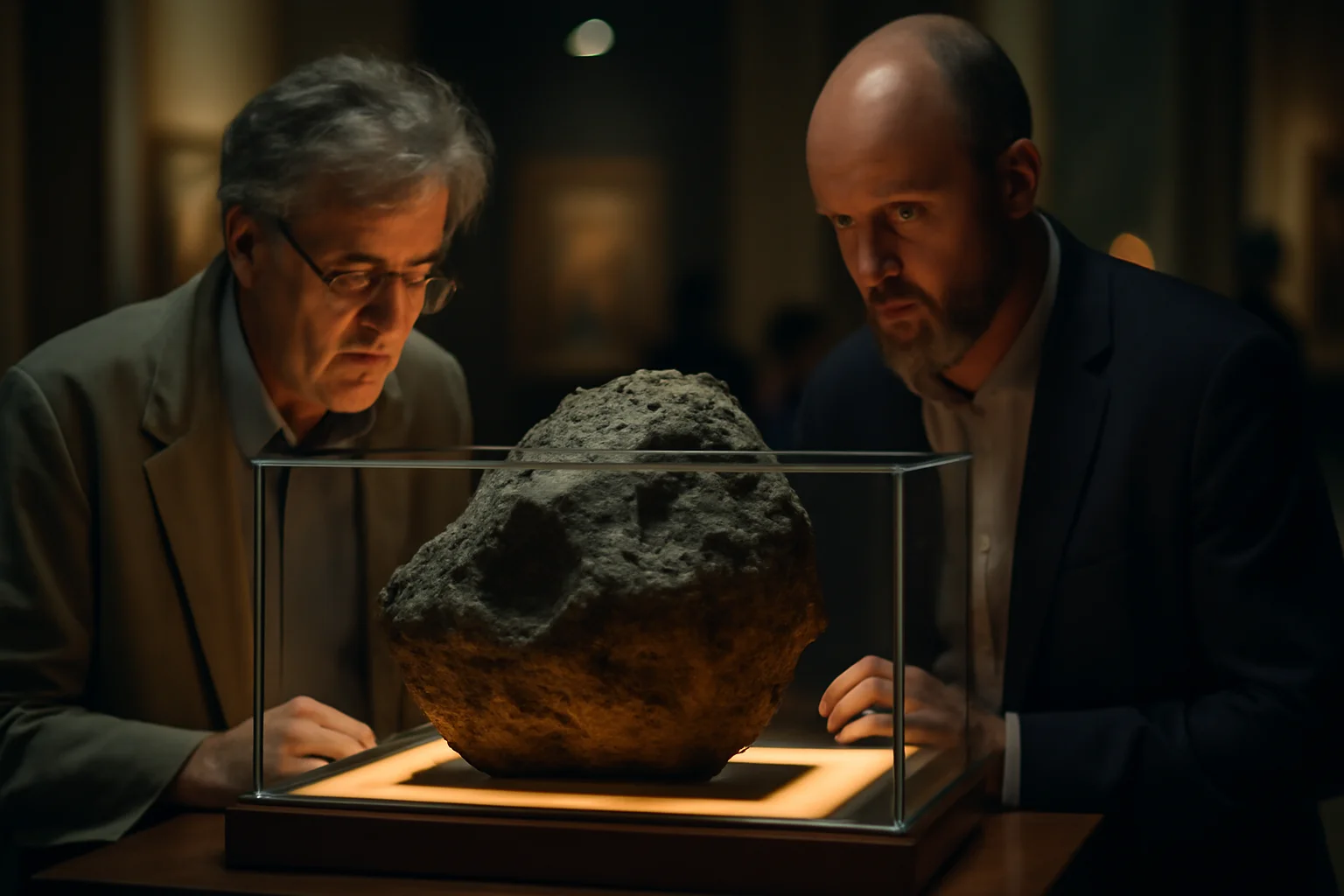
The sale and subsequent fate of NWA 16788 reignited age-old debates about the intersection of science, commerce, and the stewardship of knowledge.Some scientists argued passionately that specimens of such importance should remain in public hands, accessible to researchers and educators for generations to come.Private collectors, in turn, pointed out that without their financial support, many major discoveries would never be made, nor preserved for posterity.Cassandra Hatton highlighted the complicated relationship between museums and collectors, noting that many private owners loan their treasures to public institutions, fostering research and discovery.She explained, “If it’s precious to you monetarily, you take care of it. Having this value tied to the object helps ensure that it is taken care of.”The debate underscored a deeper truth: that the pursuit of knowledge is often intertwined with human desires for ownership, prestige, and legacy.In the case of NWA 16788, the hope remained that future generations would benefit from its secrets, regardless of its current home.The meteorite’s story offered a microcosm of the broader challenges facing science in a world where resources, opportunity, and access are unevenly distributed.Yet it also demonstrated the power of wonder and curiosity to unite people across disciplines and boundaries, sparking dialogue and reflection about our place in the universe.In the end, the legacy of the world’s largest Martian meteorite would depend not just on its owner, but on the collective will to learn, share, and inspire.
Advertisement
9. The Legacy of NWA 16788

As the world moved on from the excitement of the auction, the story of NWA 16788 continued to resonate—an unfinished chapter in the long narrative of exploration and discovery.Its journey, from Martian crust to Saharan desert to New York auction floor, symbolized the enduring spirit of inquiry that has driven humanity for millennia.For scientists, the meteorite remained a treasure trove of data, a potential key to unlocking mysteries about Mars’ volcanic history, climate, and even the possibility of ancient life.Collectors saw in it the ultimate prize—a piece of another world, tangible proof of the limitless scope of human ambition and curiosity.Educators and storytellers found new ways to share its tale, inspiring students and the public to imagine distant worlds and the journeys that connect them.Through its public exhibitions and the stories told by experts like Hatton, NWA 16788 became an ambassador for science, inviting everyone to share in the awe of discovery.Its legacy, like the grooves and ripples on its surface, was shaped by time, chance, and the choices of those who encountered it.While its final resting place might remain a mystery, its impact on the world—scientifically, culturally, and emotionally—was already profound.In the end, NWA 16788 proved that even a rock, hurled through space and forged in fire, could serve as a bridge between worlds, ideas, and generations.The largest Martian meteorite on Earth had found its place not just in a collection, but in the shared imagination of all who yearn to understand the cosmos.
Advertisement
10. New Frontiers: What Comes After the Auction
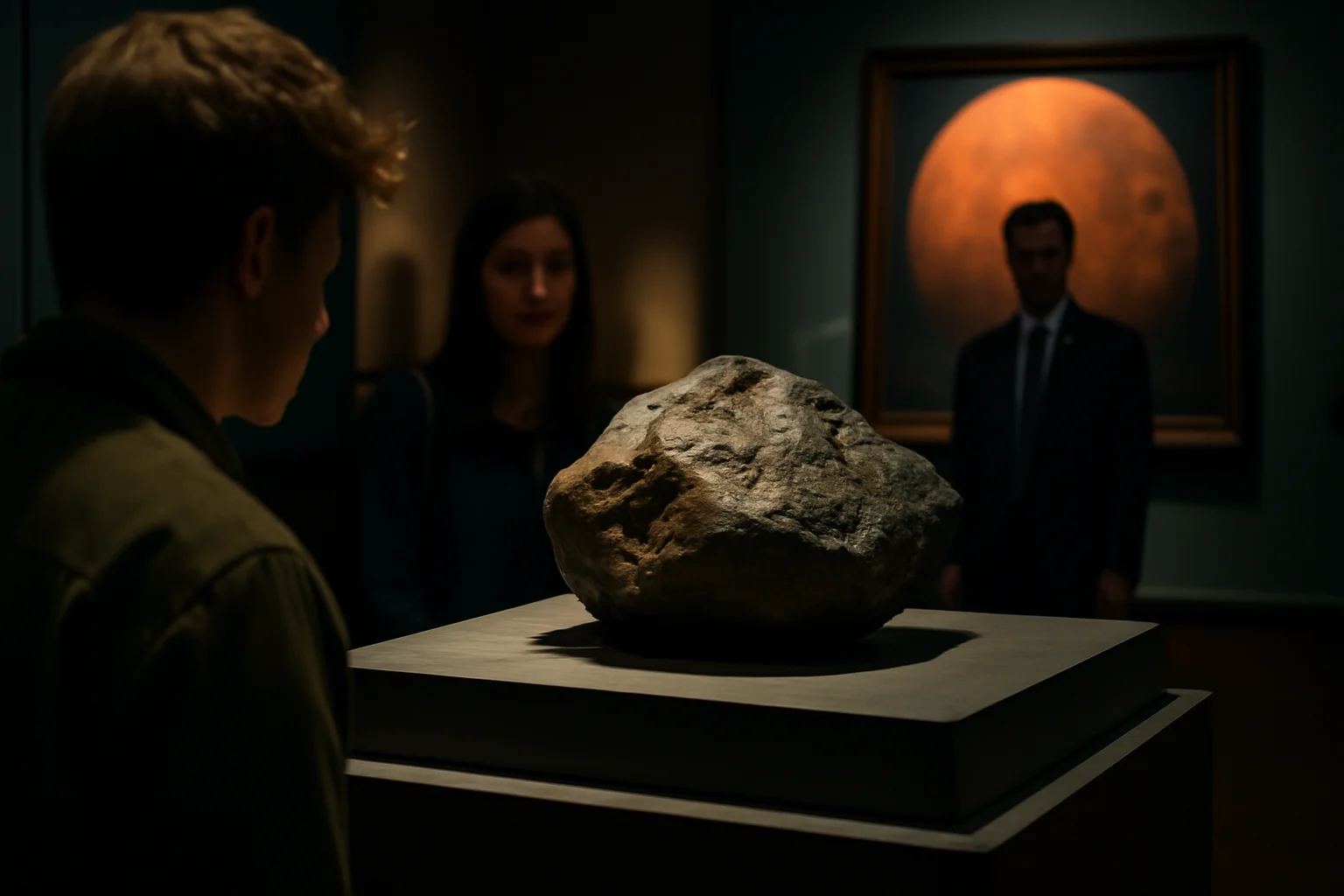
As headlines faded and the meteorite’s fate slipped from public view, the broader significance of NWA 16788 lingered—a symbol of ongoing exploration and the ever-renewing quest for knowledge.Its sale underscored both the potential and the pitfalls of a world where science and commerce coexist, where rare wonders can change hands even as their value to humanity remains incalculable.For planetary scientists, the hope persisted that the stone’s new owner would continue to support research, perhaps lending samples or allowing further study by experts.The auction’s spectacle rekindled public fascination with Mars and the broader mysteries of the solar system, spurring new interest in space exploration and planetary science.Museums and research institutions renewed their efforts to secure funding and expand their collections, aware of how quickly opportunities can vanish into private vaults.Collectors, too, found new purpose in their roles as stewards of rare objects, balancing personal ambition with the responsibilities of history.Meanwhile, students and dreamers everywhere looked to NWA 16788 as proof that the universe still holds secrets worth chasing—reminding us that sometimes, the most profound discoveries lie just beyond the edge of what we know.As future missions to Mars and beyond promise new revelations, the story of the world’s largest Martian meteorite remains a touchstone for what is possible when luck, skill, and vision collide.In a world ever more driven by the pursuit of the extraordinary, NWA 16788 stands as a testament to the enduring allure of the unknown, and the unbreakable bond between humanity and the stars.Whether on display, under study, or locked away, the legacy of this cosmic traveler endures, urging us onward—ever searching, ever dreaming, ever reaching for Mars and beyond.
Advertisement
Advertisement
You May Also Like





